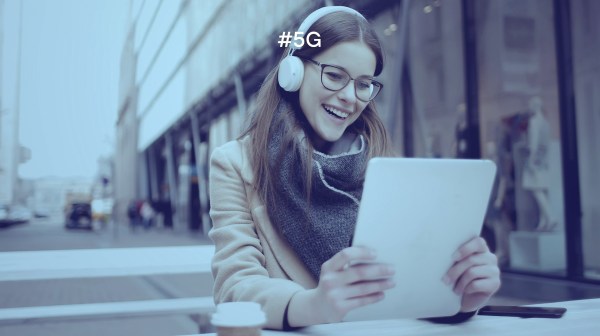On the first day of MWC 2022, Telefónica presented an avant-garde and innovative experience together with the Olympic and world badminton champion Carolina Marín: holographic telepresence, connecting the Agora of the company’s stand in Barcelona with a volumetric reconstruction of the athlete in real time from Madrid, where she was physically present. This experience shows the future of telepresence, an opportunity to bring people with whom to interact in real time to the living room of homes, companies, or their customers.
This technological milestone has been worked from a volumetric capture room with 12 Intel Realsense cameras that collect image and volume of the person inside, which generates 50 gigabits of information per second that are processed in real time by Evercoast software on high-performance servers from HPE. All this is sent to Intel Xeon Scalable processor-based servers in Telefónica’s Edge Computing, and with the use of Intel Advanced Volumetric Libraries, which enable ultra-low latency immersive streaming experiences, the hologram is sent to all the people who connect to the telepresence via 5G, either from PCs, from a tablet, or with augmented reality glasses such as the Hololens 2. Holographic telepresence is part of the “Piloto 5G Madrid” project, promoted by the Ministry of Economic Affairs and Digital Transformation through Red.es, and co-funded by the European Regional Development Fund (ERDF) to develop 5G technology in Spain.
Talking to a holography is not science fiction
Technological development has been key to the success of this pilot, as 5G provides the low latency needed to access the holography without delay, and thus make remote interaction possible; and Edge Computing, for its part, is essential to process all the amount of information that is generated in the creation of a volumetric video, plus make it accessible at low latency to telepresence users.
Holographic telepresence brings people closer, no matter where they are, and places them in front of the application user. When this visualization is also done through augmented reality glasses, the real-time sensation of presence is unique. This solution makes it possible to prepare a photo shoot with a stylist in Madrid and a model in New York or experience a catwalk up close, see the presentation of the latest signings of a sports team as if it were happening in your living room, check the assembly of a mechanical part or explain how to perform a surgical operation remotely and resolve doubts. All this remotely, but with the impression that you are witnessing it in the same place where it is happening.
“Something unique about this solution is that it happens in real time, we are not talking about a recording. Everything is live, which offers two fundamental benefits: on the one hand, the strong sense of presence that you transmit, making you forget that the person is not really in front of you and, on the other hand, the possibility of interaction with whoever is on the other side, which makes it a spectacular remote collaboration tool,” explains Mercedes Fernández Gutiérrez, Innovation manager at Telefónica Spain.
“Enabled by Intel Xeon Scalable processor-based servers and the Intel Advanced Volumetric Libraries we’re showcasing how it’s possible to deliver a high quality, live volumetric experience. This solution utilizes the benefits of 5G connectivity and Edge Computing to provide not only a compelling user experience but more importantly it demonstrates the potential for Volumetric use cases in enterprise scenarios,” Nagesh Puppala, general manager Edge and Cloud Video Division, Intel.
“We enable with our technology unsurpassed communication experience among people, with Holographics Telepresence extend beyond classical solutions providing richer users experience and customer engage, to change the way they hold events or conferences. HPE technology enable a high-performance optimized computing suited to deliver time sensitive workloads in environments of all size,” said Lluis Martinez, South Europe Telco VP at HPE.
“We’re in the midst of a platform shift from 2D to 3D. Companies of all kinds are demanding tools to create 3D digital humans for a wide range of use cases. But creating photoreal 3D humans in motion is hard. And streaming them over the internet in real-time is even harder. Evercoast has now made it easy with our volumetric software platform for telepresence, the metaverse, virtual production, NFTs, and more. The convergence of a strong network from Telefónica, powerful processor and server technologies from Intel and HPE, and 3D volumetric reconstruction, compression, and streaming from Evercoast has delivered an end-to-end solution for the real-time streaming of digital humans,” adds Ben Nunez, CEO, Evercoast.
For more information: Telefónica at MWC 2022






